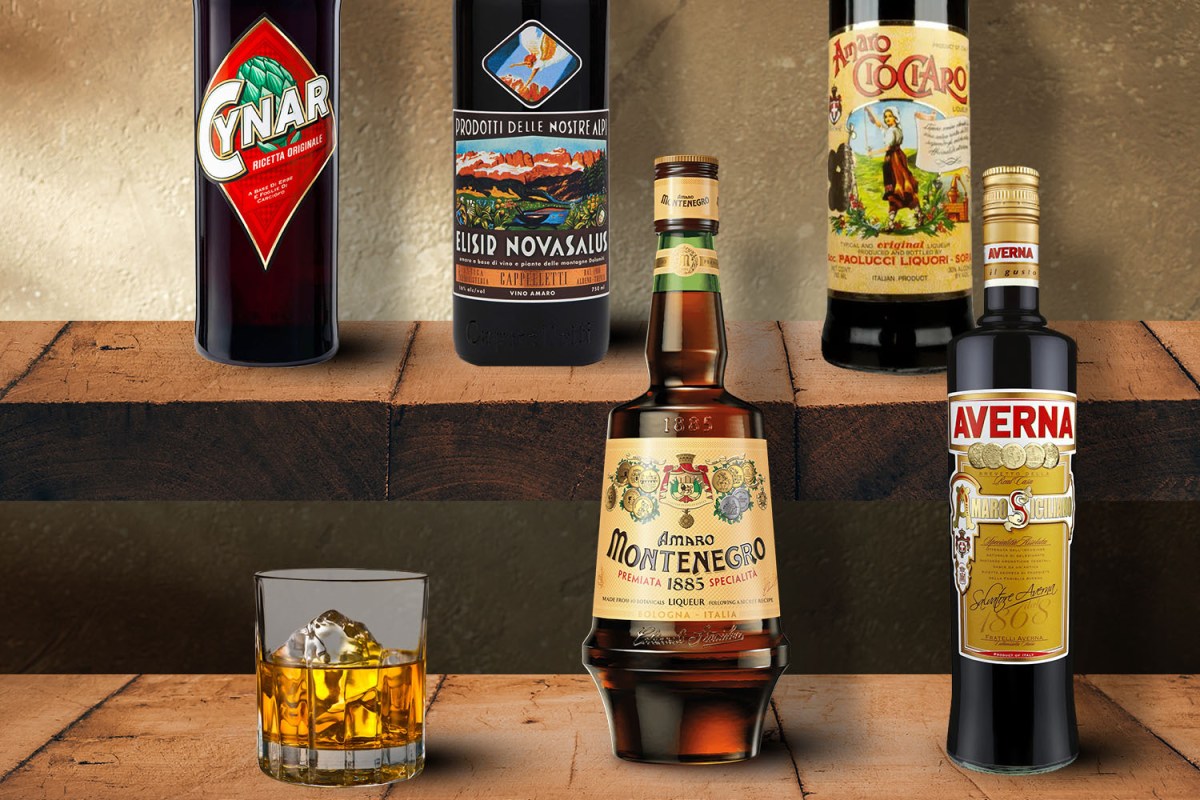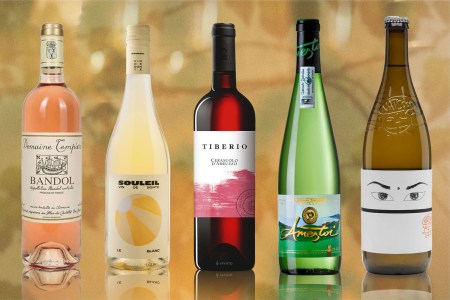This story is an exclusive from Wondercade, the newsletter from Neil Patrick Harris produced in partnership with InsideHook Studios. You can sign up — for free — to receive it right here.
Hello, InsideHook readers! It’s me, Jonathan Lind, the Wondercade house bartender back to teach you more tips on tipples. That sounded dirty, and I’m very okay with that. Not sure about you, but I had an absolute humdinger of a holiday season: Between all the roasts and cakes, and punches and nogs, I am, even two-plus weeks later, in desperate need of a digestivo or two.
What’s a digestivo (or if you prefer le français, digestif), you may ask? It’s any after-dinner drink — from sambuca to cognac — that’s supposed to settle the stomach and soothe the overworked digestive tract after a meal. There’s very little hard science to back that up, sadly, but anecdotally it checks out…or at least it’s the perfect, lower-proof way to ease into the later bits of the evening. So today, I’d like to talk to you about one of the most iconic digestivi: the glorious Italian bitter liqueur, amaro.
For me, amaro (singular “amaro,” plural “amari”) is great at the end of any meal: the lower ABV, plus it’s bracingly bitter (“amaro” is Italian for “bitter”), so it helps to enliven my senses before making my way back out in the hubbub of NYC. While it does sit in the “digestif” family, amari on their own represent a large collection of fairly syrupy liqueurs that all share the common trait of being lower-proof (for the most part), bitter (always), and generally flavored with spices and orange peels (pretty much always). You might find it as a cocktail ingredient, but it was originally produced to be consumed as a standalone beverage. Regardless of the amaro brand you choose, for serving, I would recommend simply pouring two ounces over ice and garnishing with an orange twist. Easy peasy.
But which ones do I drink?! Never fear, I won’t leave you entirely without guidance! These are a few suggestions for an amaro or 3 for your bar at home, along with some flavor notes and pairing advice.
Amaro Montenegro
This amaro comes from Bologna, and has become a bartender staple over the past 10 years. It’s richly flavored with a myriad of botanicals, but on the nose are strong notes of grapefruit and rose. One of my personal favorite aspects of this amaro is its distinct lack of bitterness…at least compared to other amari. Montenegro is an absolute shoo-in for Mexican cuisine, which focuses on freshness and flavor: think proper tacos al pastor. Bonus points are awarded because Montenegro and mezcal go together so well. (There’s a better-than-good chance that it is in your bartender’s top 5 favorite shots.)
Amaro Averna
With origins in Sicily, this is one of the delicious amari from the south of the country that I’ve had the pleasure of consuming. Heavy on the orange and caramel notes, this is a delicious and syrupy amaro that is pleasantly light on bitterness. Averna is one of my favorite finishes to a bright and acidic meal; think seafood with pasta, fried bites and tomato sauce. (Great, now I’m hungry.)
6 Lesser-Known Wines to Drink This Summer, Courtesy of a Sommelier
A guide to whites, rosés and oranges, exclusively from Wondercade by Neil Patrick HarrisElisir Novasalus
Abandon hope, all ye who enter here! This is the amaro for those who have no problem with bitterness, because this bottle is a doozy. From high in the Italian Alps, Novasalus is one you drink to settle the stomach after a heavy meal, which is perfect considering the cuisine of Northern Italy is known for its liberal (and much enjoyed) use of truffle, cheese and meat. Sipped neat or with a single piece of ice, give this one a moment to grow on you, as it is really quite delicious and complex. Your guests will be impressed!
Amaro CioCiaro
If memory serves, this is one of the first amari I ever had the pleasure of consuming way back in the day at Eleven Madison Park (working, not dining, I don’t exist in that tax bracket!). The standout feature of CioCiaro is the dominance of the orange-peel notes, which, considering where it’s from (the Lazio region in Central Italy), makes perfect sense! While I won’t say that it can be used interchangeably with the Averna, I will say that they are similar in style: sweet, slightly bitter, epically delicious. Try this one after serving your guests a slice or two of proper Roman pizza (known as Sicilian or Grandma-style here in the States).
Cynar
Hailing from the town of Termoli, by the sea and about halfway up the boot (ya know, cause Italy looks like a boot?), Cynar utilizes artichokes as one of the flavoring ingredients to reflect the changing terroir of Italy as you travel north. The result is a much more bitter amaro that still maintains a relatively high sugar content. Now, I know what you’re thinking: sugar is bad. While I wouldn’t recommend drinking an entire bottle of Cynar (largely due to the fact that this one is only slightly less alcoholic than standard spirits), the sugar helps balance out the bitterness. My favorite way to serve Cynar is to simply stir it over ice with a pinch of salt. You heard me: salt. If that’s not your style, have a glass after a dinner centered on the cuisine of coastal Italy. (Remember, as the wine world would say, “If it grows, it goes.” Generally speaking, food from a particular region will pair with the beverages produced in that same region. So it is with amari.)
Until next time…cheers!
Join America's Fastest Growing Spirits Newsletter THE SPILL. Unlock all the reviews, recipes and revelry — and get 15% off award-winning La Tierra de Acre Mezcal.

























